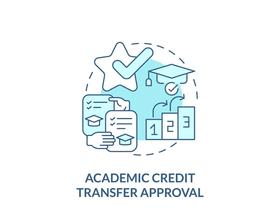- Pima Medical Institute is a highly experienced and proven leader in health care education. For more than 35 years, Pima Medical Institute has offered specialized, quality healthcare training that is quick and affordable, and has been serving the Denver community since 1988. In Denver, we offer medical training in medical Training in Denver certificate programs dental assistant, expanded duties dental assistant, medical assistant, medical administrative assistant, pharmacy technician, phlebotomy technician, veterinary assistant.
School Highlights
Pima Medical Institute-Denver serves 1,227 students (100% of students are full-time).
The college's student-teacher ratio of 16:1 is lower than the state community college average of 23:1.
Minority enrollment is 62% of the student body (majority Hispanic), which is more than the state average of 51%.
Quick Facts (2025-26)
- Enrollment: 1,227 students
- Acceptance Rate: 70%
- Student-teacher ratio: 16:1
- Minority enrollment: 62%
- Source: Integrated Postsecondary Education Data System (IPEDS)
School Overview
The teacher population of 77 teachers has stayed relatively flat over five years.
Pima Medical Institute-Denver
(CO) Community College Avg.
Carnegie Classification
Special Focus Two-Year: Health Professions
Baccalaureate/Associate's Colleges: Mixed Baccalaureate/Associate's
Institution Level
At least 2 but less than 4 years
At least 2 but less than 4 years
Institution Control
Private for-profit
Private, non-profit
Total Faculty
77 staff
92 staff
Number of Programs Offered
13
46
School Calendar
Student Body
The student population of Pima Medical Institute-Denver has grown by 59% over five years.
The student-teacher ratio of 16:1 has increased from 9:1 over five years.
The Pima Medical Institute-Denver diversity score of 0.62 is less than the state average of 0.69. The school's diversity has stayed relatively flat over five years.
Total Enrollment
1,227 students
2,252 students
Student-Teacher Ratio
16:1
23:1
# Full-Time Students
1,227 students
743 students
# Part-Time Students
n/a
1,509 students
# Enrollment Undergraduate
122 students
185 students
# Full-Time Undergraduate Students
1,227 students
536 students
# Full-Time Graduate Students
n/a
95 students
# Part-Time Undergraduate Students
n/a
1,509 students
Total Dormitory Capacity
n/a
307 students
% American Indian/Alaskan
1%
1%
% Asian
3%
6%
% Hispanic
48%
25%
% Black
5%
6%
% White
38%
49%
% Hawaiian
n/a
3%
% Two or more races
5%
4%
% Non Resident races
n/a
2%
% Unknown races
n/a
4%
Diversity Score
0.62
0.69
College Completion Rate (Students who graduate in less than 4 years)
62%
64%
College Completion Rate (Students who graduate in 4 years or more than 4 years)
n/a
27%
Average Graduate Earnings (10 Years)
$29,800
$33,300
Tuition and Acceptance Rate
% Students Receiving Some Financial Aid
84%
83%
Median Debt for Graduates
$9,500
$10,981
Median Debt for Dropouts
$4,718
$5,000
Acceptance Rate
70%
98%
Source: 2024 (or latest year available) Integrated Postsecondary Education Data System (IPEDS) , School Administrators
Frequently Asked Questions
What is the acceptance rate of Pima Medical Institute-Denver?
The acceptance rate of Pima Medical Institute-Denver is 70%, which is lower than the state average of 98%.
Recent Articles

Student Success Programs That Actually Work at Community Colleges
Discover evidence-based student success programs at community colleges for 2025, with outcomes, examples, and actionable strategies.

Best Community Colleges by Career Path in 2025
Explore top community colleges for career-training programs in 2025, including healthcare, IT, skilled trades and business pathways.

Dual Enrollment in High School: Benefits, Risks & Real Student Results
Explore the pros and cons of dual enrollment in high school, real outcomes for students in 2025, and how to decide if it’s right for you.





